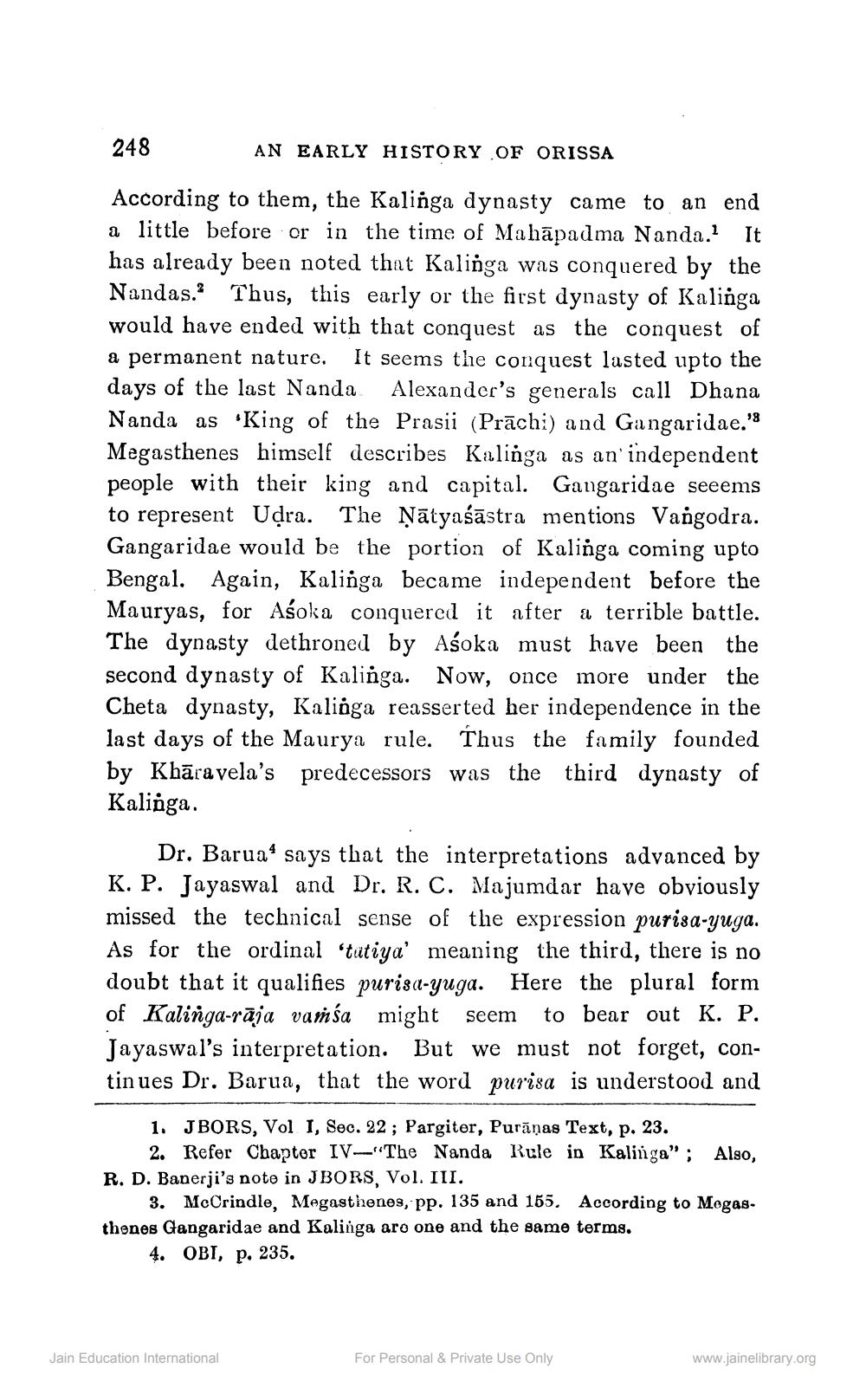________________
248
AN EARLY HISTORY OF ORISSA
According to them, the Kalinga dynasty came to an end a little before or in the time of Mahāpadma Nanda. It has already been noted that Kalinga was conquered by the Nandas. Thus, this early or the first dynasty of Kalinga would have ended with that conquest as the conquest of a permanent nature. It seems the conquest lasted upto the days of the last Nanda Alexander's generals call Dhana Nanda as 'King of the Prasii (Prāchi) and Gangaridae.'' Megasthenes himself describes Kalinga as an independent people with their king and capital. Gangaridae seeems to represent Udra. The Ņātyaśāstra mentions Vangodra. Gangaridae would be the portion of Kalinga coming upto Bengal. Again, Kalinga became independent before the Mauryas, for Asoka conquered it after a terrible battle. The dynasty dethroned by Aśoka must have been the second dynasty of Kalinga. Now, once more under the Cheta dynasty, Kalinga reasserted her independence in the last days of the Maurya rule. Thus the family founded by Khāravela’s predecessors was the third dynasty of Kalinga.
Dr. Barua' says that the interpretations advanced by K. P. Jayaswal and Dr. R. C. Majumdar have obviously missed the technical sense of the expression purisa-yuga. As for the ordinal “tutiya' meaning the third, there is no doubt that it qualifies purisa-yuga. Here the plural form of Kalinga-rāja vamśa might seem to bear out K. P. Jayaswal's interpretation. But we must not forget, continues Dr. Barua, that the word purisa is understood and
1. J BORS, Vol 1, Sec. 22 ; Pargiter, Purāņas Text, p. 23.
2. Refer Chapter IV-- The Nanda Rule in Kalinga"; Also, R. D. Banerji's note in J BORS, Vol. III.
3. McCrindle, Megasthenes, pp. 135 and 155. According to Megas. thenes Gangaridae and Kalinga aro one and the same terms.
4. OBI, p. 235.
Jain Education International
For Personal & Private Use Only
www.jainelibrary.org




